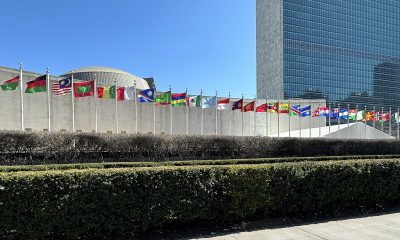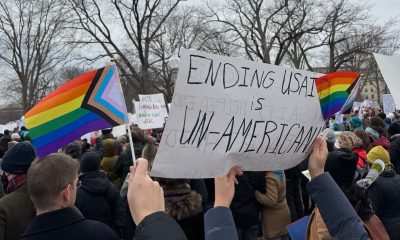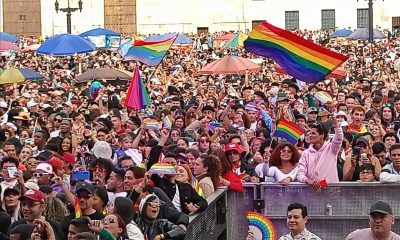World
UNHCR highlights work with LGBTQ asylum seekers in Central America
Agency adopted LGBTQ-inclusive non-discrimination policy in 2018

Officials with the U.N. Refugee Agency in Central America and Mexico say they remain committed to helping LGBTQ asylum seekers and migrants in the region.
UNHCR Guatemala Representative Besem Obenson told the Washington Blade during an interview at her Guatemala City office last September that she and her colleagues work with Asociación Lambda and other Guatemalan NGOs to provide LGBTQ asylum seekers with access to LGBTQ-friendly shelters, psychosocial care and other programs once they identify themselves as LGBTQ. Obenson said UNHCR also works with the Guatemalan government to improve the way it responds to an asylum seeker with an ID document that does not correspond to their gender presentation.
“Our role … is to strengthen the government’s response to refugees and asylum seekers,” said Obenson.
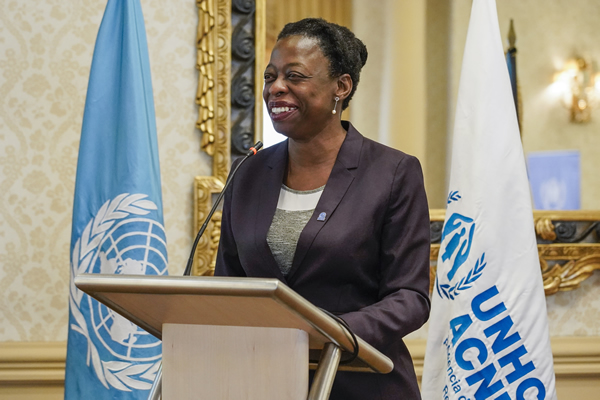
Rafael Zavala, a senior UNHCR official in El Salvador, echoed Obenson when he spoke with the Blade at UNHCR’s office in San Salvador, the Salvadoran capital, last July.
Zavala noted UNHCR has a formal partnership with COMCAVIS Trans, a Salvadoran transgender rights group. Zavala said UNHCR also works with two other LGBTQ groups — Aspidh Arcoíris Trans and Diké LGBTI+ — in a less official capacity.
“What we do is work at the community level to strengthen their role in communities,” Zavala told the Blade. “We also build for them safe spaces (to accept internally displaced people, migrants and deportees who are LGBTQ) and also find spaces where they can receive services, attention and legal assistance.”
Anti-LGBTQ violence among migration ‘root causes’
Vice President Kamala Harris and others have acknowledged anti-LGBTQ violence is one of the “root causes” of migration from Central America’s Northern Triangle that includes El Salvador, Guatemala and Honduras.
The Mexican Commission on Refugee Aid (COMAR) on Monday reported 27.7 percent of the 131,448 people who asked for asylum in Mexico in 2021 were Honduran.
The Justice Department notes 85,391 people asked for asylum in the U.S. in the 2021 fiscal year from Oct. 1, 2020, and Sept. 30, 2021. More than twice as many people asked for asylum in the U.S. during the 2020 fiscal year, which began before the pandemic.
The Justice Department statistics indicate 10 percent of the 8,679 Guatemalans, 11 percent of the 5,464 Hondurans and 14 percent of the 8,030 Salvadorans who applied for asylum in the U.S. during the 2021 fiscal year won their cases. Neither the Justice Department nor COMAR specify the asylum seekers’ sexual orientation or gender identity.
The Biden administration last February began to allow into the U.S. asylum seekers who the previous White House forced to pursue their cases in Mexico under the Migrant Protection Protocols program. The Biden administration has sought to end MPP, but a federal appeals court last month blocked this effort.
Title 42, a Center for Disease Control and Prevention rule that closed the Southern border to most asylum seekers and migrants because of the pandemic, remains in place.
UNHCR non-discrimination policy includes sexual orientation, gender identity
UNHCR Senior Protection Officer Sofia Cardona last summer during an interview at UNHCR’s Mexico City office acknowledged that identifying asylum seekers who are LGBTQ is a challenge. Cardona and other UNHCR representatives with whom the Blade spoke for this story referred to the agency’s 2018 non-discrimination policy that includes sexual orientation and gender identity and specifically recognizes LGBTQ asylum seekers.
“Lesbian, gay, bisexual, transgender and intersex (LGBTI) persons face complex challenges, threats and barriers and are often exposed to discrimination, abuse, prejudice and violence due to their sex, sexual orientation and/or gender identity,” notes the policy. “This is often severely compounded in situations of displacement, where the nature of the discrimination they encounter can be particularly virulent, their isolation from family and community profound and the harm inflicted on them severe.”
The policy states “diversity refers to different values, attitudes, cultural perspectives, beliefs, ethnicities, nationalities, sexual orientation, gender identity, disability, health, social and economic status, skills and other specific personal characteristics.”
“Diversity characteristics vary from person to person and intersect, making each person unique,” it reads. “These differences must be recognized, understood, respected and valued by UNHCR in each context and operation in order to address effectively the needs of all persons of concern. Respecting diversity means recognizing and valuing those differences and creating a protective, inclusive and non-discriminatory environment where everyone’s rights are upheld.”
Cardona noted UNHCR staff and representatives of NGOs and governments with which it works regularly attend LGBTQ sensitivity trainings. Topics include ways to determine whether an asylum seeker is LGBTQ without forcing them to out themselves.
“You can’t force a disclosure,” said Cardona. “You can neve directly ask somebody, so, are you gay? Are you transgender? It’s incorrect because you may put people at risk, so it’s a very thin line of you can never force a disclosure of someone’s gender identity or sexual orientation, but you must signify to somebody that you are a safe space to receive that disclosure.”
Cardona said UNHCR representatives can ask an asylum seeker what their name is or disclose to them that they are “de la diversidad” or “from a diverse background.”
“You never begin an interview assuming anything by the way a person looks because in forced displacement gender expression is unlikely to match up to gender identity,” Cardona told the Blade. “So you need to understand that you may very well have conversations with a trans man who is wearing makeup and a dress, and you may very well be having a conversation with a trans woman who has a beard because that is how they are protecting themselves in a sphere of forced displacement.”
Cardona also noted UNHCR staff wear buttons with slogans that include “en seguridad” or “espacio libre de discriminación,” which translates into “in safety” or “discrimination-free space” respectively. Both Cardona and Zavala were wearing such buttons when they spoke with the Blade.
“We try very, very, very hard to work with our staff and also our partners … so they have their capacity strengthened in LGBTI rights,” Dagmara Mejia, the director of UNHCR’s field office in the Mexican border city of Tijuana, told the Blade last summer during an interview at her office.
Mejia noted the trainings she and her colleagues conduct focuses on topics that include the use pronouns that correspond to an asylum seeker’s gender identity and shelter standards for LGBTQ asylum seekers.
UNHCR works with Jardín de las Mariposas, a shelter for LGBTQ asylum seekers in Tijuana that is less than two miles from El Chaparral, the main port of entry between the city and San Diego. UNHCR also maintains contact with Organization for Refuge, Asylum and Migration Executive Director Steve Roth and the California-based Transgender Law Center.
“If there is no disclosure, no trust, then we cannot meet their needs and respond,” said Mejia.
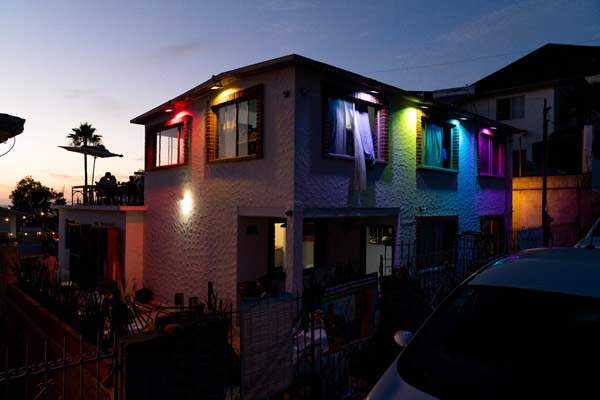
“We also create these environments that allow the community to feel safe and to know that it is a place where they can come without the risk of discrimination,” said Zavala.
Obenson told the Blade that UNHCR has worked with the Foundation for Ecodevelopment and Conservation (FUNDAECO), a Guatemalan NGO, to hire asylum seekers who have chosen to stay in Guatemala as park rangers. Trans women are among those who FUNDAECO has hired.
“People need to feel safe,” said Obenson. “People need to be able to live their authentic selves without fear of violence or fear of retribution.”
“That for me, as a rep, is what I strive for,” added Obenson. “Everything that we do here at UNHCR is to encourage that.”
Ernesto Valle contributed to this story from San Salvador, El Salvador.
United Nations
UN Human Rights Council extends LGBTQ rights expert’s mandate
29 countries voted for resolution
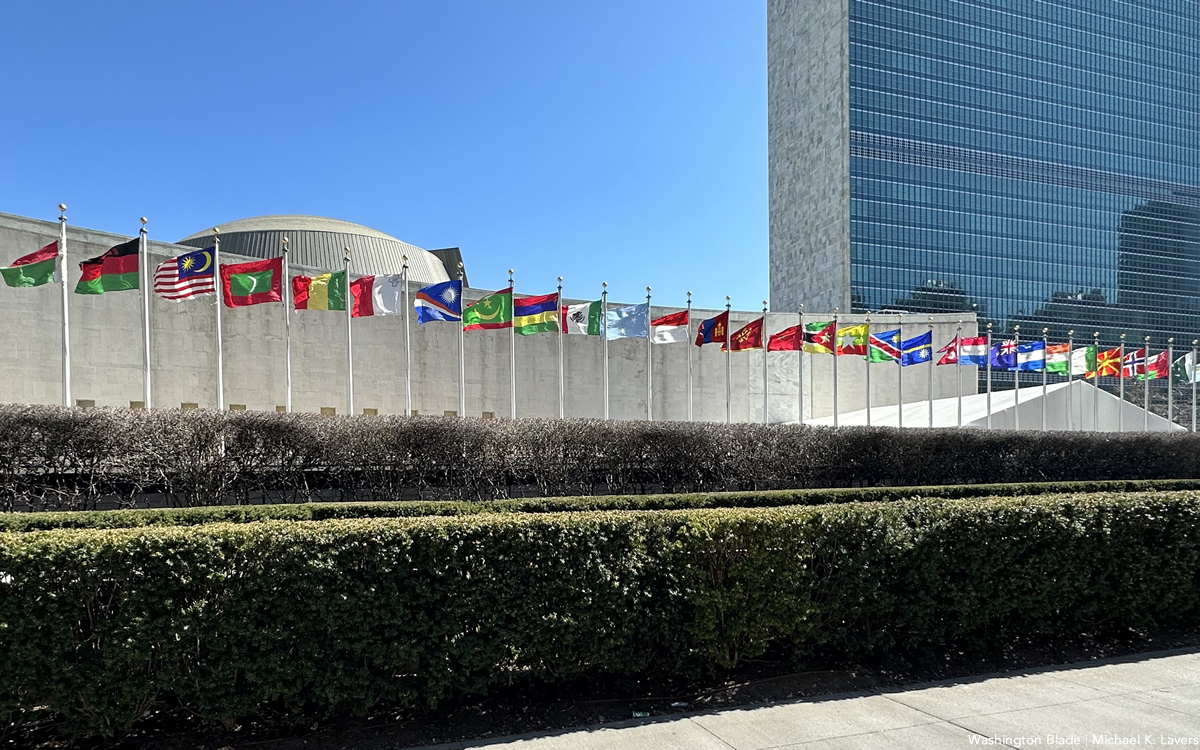
The U.N. Human Rights Council on Monday extended the mandate of the United Nations’ independent LGBTQ rights expert for another three years.
The resolution passed with 29 countries (Albania, Belgium, Bolivia, Brazil, Bulgaria, Chile, Colombia, Costa Rica, Cuba, Cyprus, the Czech Republic, the Dominican Republic, France, Georgia, Germany, Iceland, Japan, Kenya, the Marshall Islands, Mexico, the Netherlands, North Macedonia, South Korea, Romania, South Africa, Spain, Switzerland, Thailand, and Vietnam) voting for it and 15 countries (Algeria, Bangladesh, Burundi, China, Cote d’Ivoire, Democratic Republic of Congo, Ethiopia, Gambia, Indonesia, Kuwait, Malawi, Maldives, Morocco, Qatar, and Sudan) voted against it.
Benin, Ghana, and Kyrgyzstan abstained.
The U.S. in February withdrew from the Human Rights Council. The Trump-Pence administration in 2018 pulled the U.S. from it. The U.S. in 2021 regained a seat on the Human Rights Council.
Graeme Reid has been the UN’s independent LGBTQ rights expert since 2023. The South African activist, among other things, previously ran Human Rights Watch’s LGBT Rights Program.
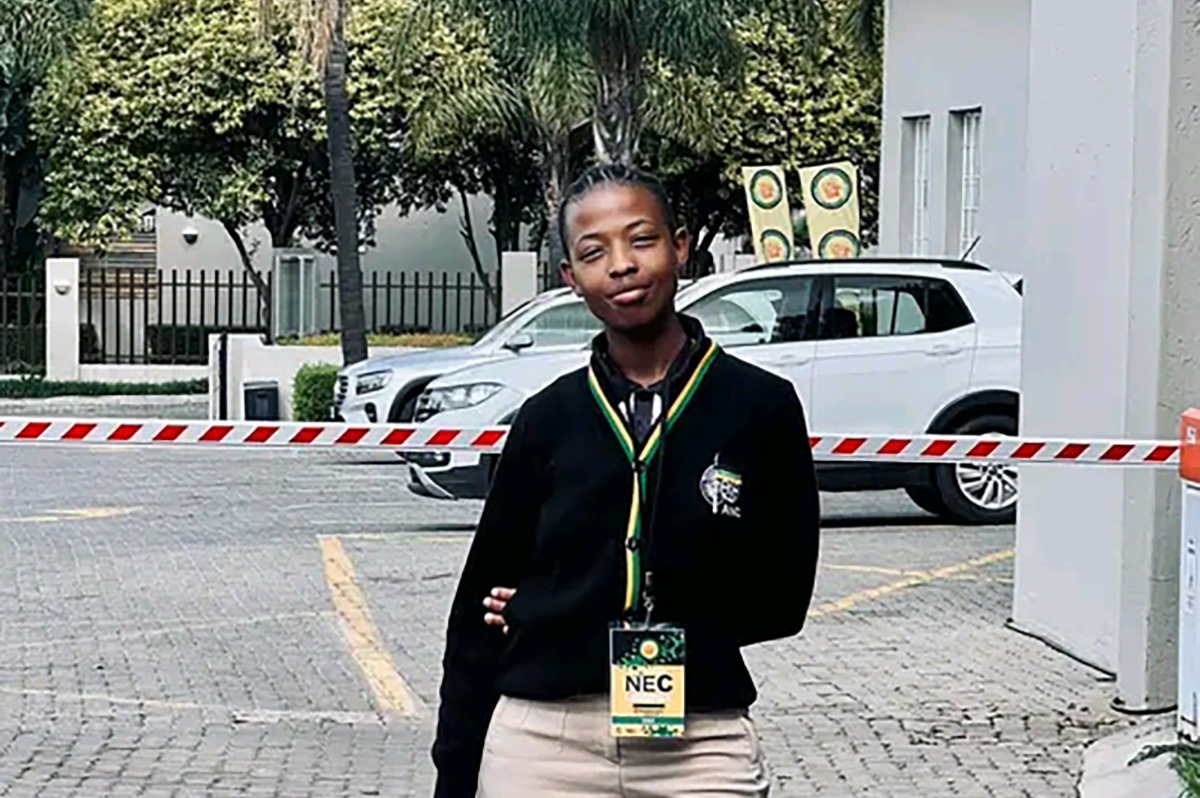
South Africa National Assembly Speaker Thoko Didiza on June 17 swore in lesbian feminist Palomino Jama as a new MP.
Jama joins other LGBTQ legislators — including Public Works and Infrastructure Minister Dean Macpherson; Forestry, Fisheries and the Environment Minister Dion George; and Deputy Women, Youth, and Persons with Disabilities Minister, Steve Letsike.
Jama said she will work hard and excel as MP.
“What a great moment to be alive. Thank you youth of 1976, thank you Simon Nkoli, Phumi Mthetwa, Paddy Nhlaphos, Vanessa Ludwig, and others for what you did for the LGBTI people in the 80s and 90s. Lastly, for the fierce fist of the Jamas to always hit where it matters for the people of this country,” said Letsike.
Embrace Diversity Movement, a local LGBTQ organization, said Jama’s inauguration came at an appropriate time, during Pride month.
“Her swearing-in took place during a month of profound significance in June, which marks both international Pride Month and Youth Month in South Africa,” said the group. “Palomino is a seasoned queer activist and dedicated community builder with a distinguished record of leadership and service.”
“The EDM proudly supports Palomino in her deployment to parliament, her presence meaningfully advances youth and queer representation in public office,” added the Embrace Diversity Movement. “We are confident that she will serve the people of South Africa with integrity, courage, and distinction.”
South Africa is the only African country that constitutionally upholds LGBTQ rights. There are, however, still myriad challenges the LGBTQ community faces on a daily basis that range from physical attacks to online abuse.
Letsike in May faced a barrage of online attacks after she released a scathing statement against popular podcaster Macgyver “MacG” Mukwevho, who during a podcast episode in April insinuated that the reason behind popular socialite Minnie Dlamini’s “unsuccessful” relationships were probably due to the bad odor from her genitals.
Letsike, who viewed MacG’s comments as offensive, called for the podcaster to be summoned before parliament’s Portfolio Committee on Women, Youth, and Persons with Disabilities and criticized the local television station that aired the podcast.
X users and other social media subscribers bombarded Letsike with anti-lesbian comments. She, however, was unphased.
Letsike continues to face anti-lesbian comments, even though MacG apologized and the television station on which his podcast had aired cancelled its contract with him.
Israel
Activist recalls experience in Tel Aviv after Israel-Iran war began
Marty Rouse was part of Jewish Federations of North America Pride mission
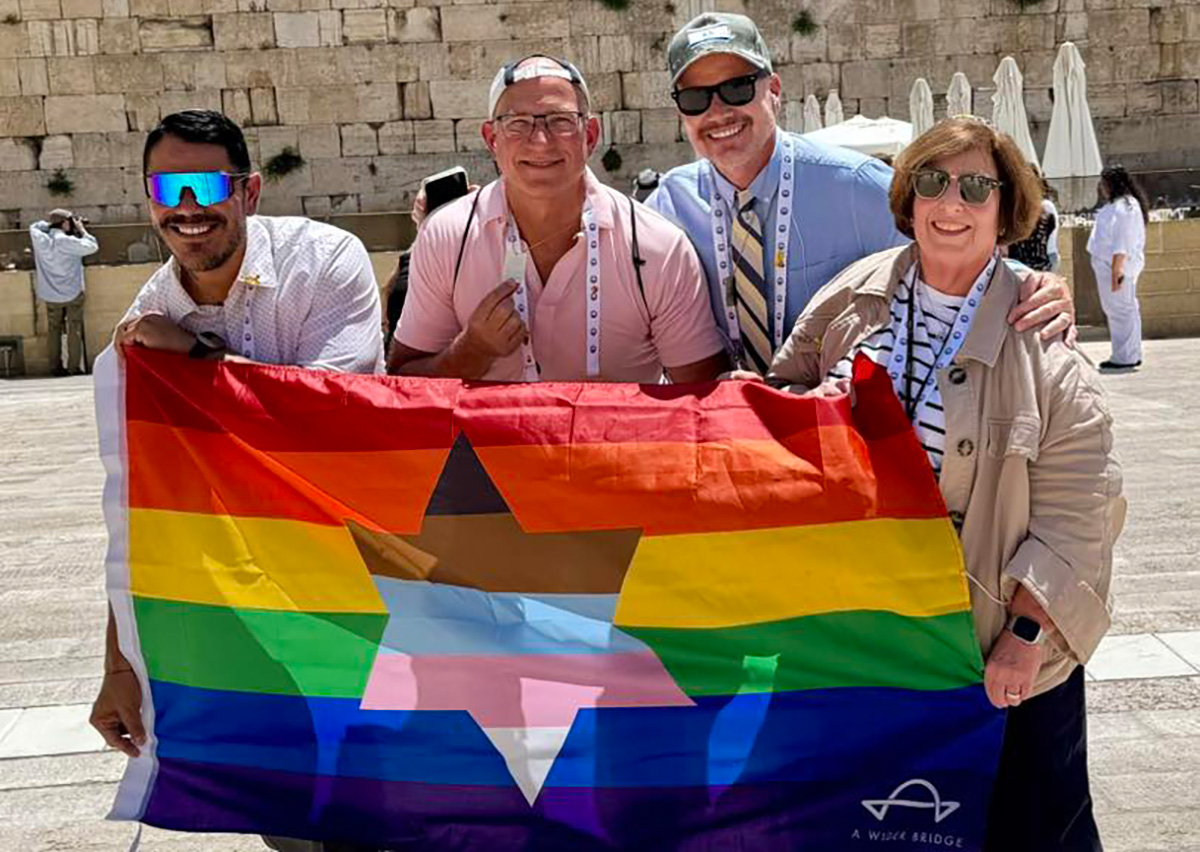
A long-time activist who was in Israel last month when its war with Iran began has returned to D.C.
Marty Rouse traveled to Israel on June 6 with the Jewish Federations of North America. The 5-day mission ended the night before the annual Tel Aviv Pride parade was scheduled to take place.
Mission participants met with Israeli President Isaac Herzog and several LGBTQ activists in Tel Aviv and Jerusalem. They visited the Western Wall, the Nova Music Festival site, and Nir Oz, a kibbutz in southern Israel that is less than a mile from the country’s border with the Gaza Strip. Mission participants also visited Sderot, a city that is roughly a mile from the Hamas-controlled enclave, a veterans rehabilitation facility, a new LGBTQ health center and the Aguda: The Association for LGBTQ Equality in Israel in Tel Aviv.
Hamas militants on Oct. 7, 2023, killed upwards of 360 partygoers and kidnapped dozens more at the music festival that was taking place at a campground near Re’im, a kibbutz that is roughly 10 miles southwest of Nir Oz. The militants killed or took hostage nearly a quarter of Nir Oz’s residents. They also took control of Sderot’s police station.
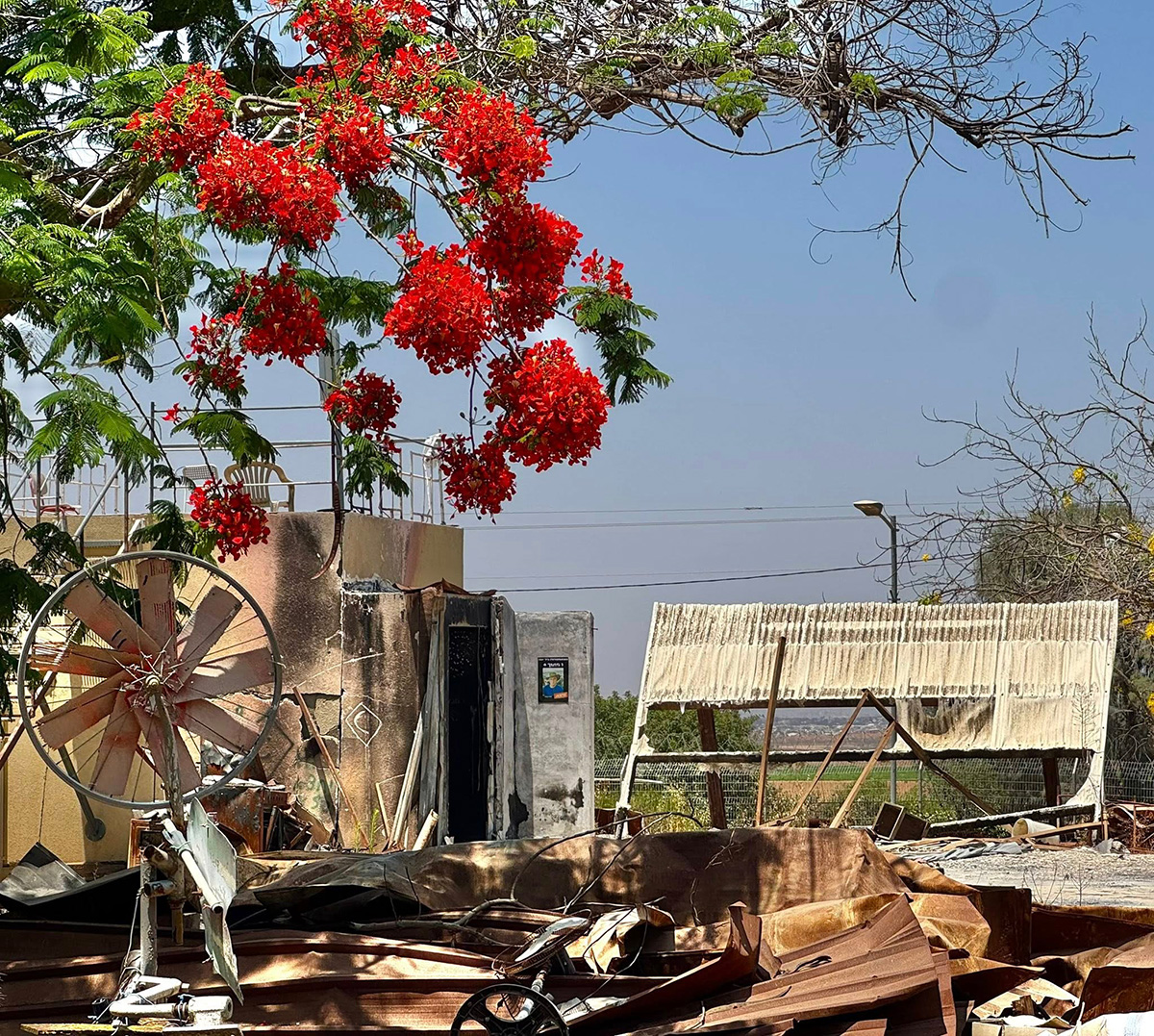
Tel Aviv Deputy Mayor Chen Arieli spoke at the mission’s closing party that took place at the Sheraton Grand, a hotel that overlooks Tel Aviv’s beachfront, on June 12.
Rouse and other mission participants planned to stay in Tel Aviv for the Pride parade, which was scheduled to take place the following day. He and Gordie Nathan, another mission participant who lives in Palm Springs, Calif., had checked into a nearby hotel that was less expensive.
“We said our farewells,” recalled Rouse when he spoke with the Washington Blade in D.C. on June 24. “We went to our hotels, and we get the warning, and then all hell broke loose.”
Israel early on June 13 launched airstrikes against Iran that targeted the country’s nuclear and military facilities.
Rouse said mission organizers told him and other participants who remained in Tel Aviv to meet at the Sheraton Grand for breakfast and dinner — Israel’s airspace was closed in anticipation of an Iranian counterattack, and authorities cancelled the Pride parade.
He said he went to bomb shelters at least twice a night for three nights.
Israel’s Home Front Command during the war typically issued warnings about 10 minutes ahead of an anticipated Iranian missile attack. Sirens then sounded 90 seconds before an expected strike.
Rouse and Nathan walked to the Sheraton Grand on June 13 when the Home Front Command issued a 10-minute warning. They reached the hotel in a couple of minutes, and staff directed them to the bomb shelter.
“You know to walk slowly, everything’s fine,” recalled Rouse. “You get 10 minutes, so everything was fine when the alarm goes off.”
Rouse described the Sheraton Grand shelter as “well lit” with WiFi, a television, and air conditioning. He was watching an Israeli television station’s live coverage of the Iranian missile attack when he saw one hit an apartment building in the Tel Aviv suburb of Ramat Gan.
A 74-year-old woman died and her boyfriend was seriously injured.
“I go over to look at the TV, just to watch,” recalled Rouse. “All of a sudden, you watch, and you see one bomb go and land and explode in Tel Aviv on TV. It landed and blew up.”
“I was like, okay, this is real, and so that was scary,” he added.
Rouse said the bomb shelter in the hotel where he and Nathan were staying after the mission ended was far less comfortable.
“It was dark. It was humid. It was hot. It was very uncomfortable,” said Rouse. “You really felt alone.”
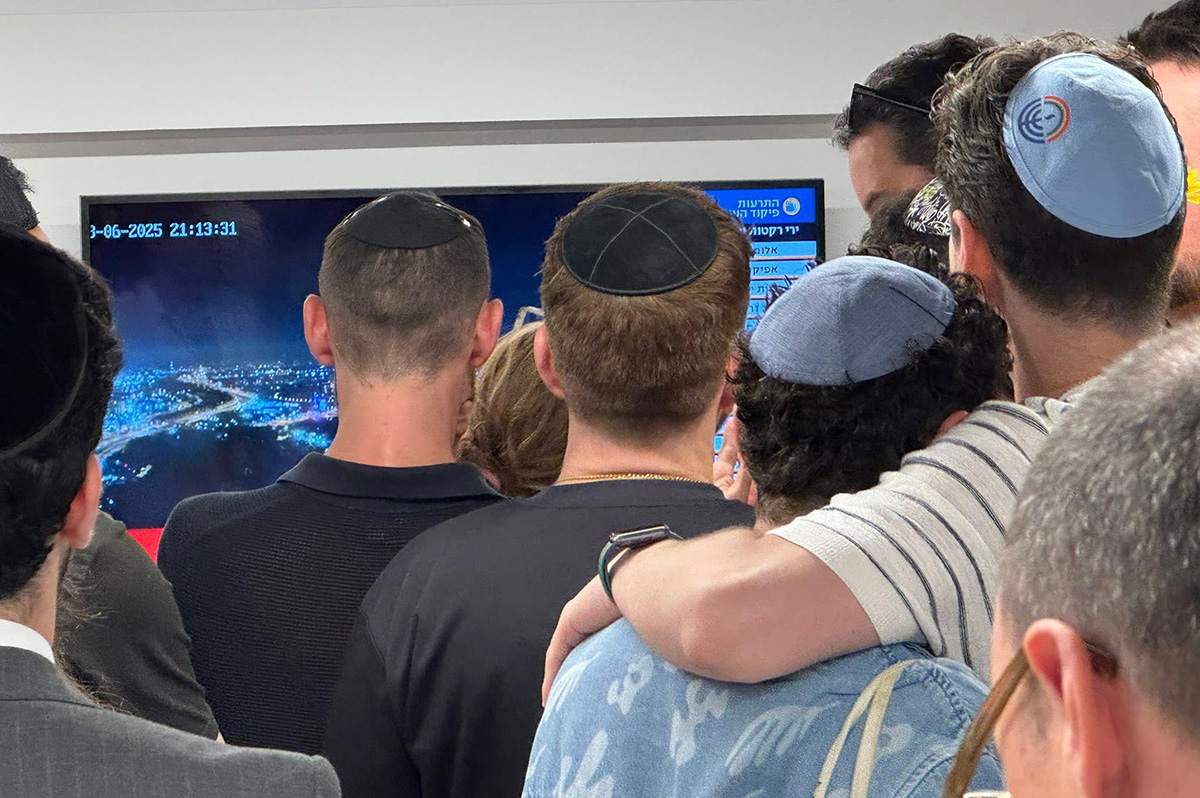
Rouse and nearly everyone else on the mission who were in Tel Aviv when the war began left Israel on June 15. They boarded buses that took them to the Jordanian capital of Amman, which is a roughly 2 1/2-hour drive from Tel Aviv through the West Bank.
Rouse described the trip as “like a field trip” until they drove across the Jordan River and arrived at the Jordanian border crossing.
“You walk into this room, and instead of being in a well air-conditioned airport, you’re in this hot, humid, small place in the middle of the desert, packed with people, and those big, large, loud fans and pictures of military people on the walls,” he said. “It was almost like a Casablanca kind of feeling.”
Rouse said Jordanian authorities brought mission participants through customs in groups of 10. A Jewish Federations of North America liaison from Amman who previously worked as a tour guide for A Wider Bridge — a group that “advocates for justice, counters LGBTQphobia, and fights antisemitism and other forms of hatred” — went “behind closed doors” to ensure everyone was able to enter the country.
“It took a really long time,” Rouse told the Blade.
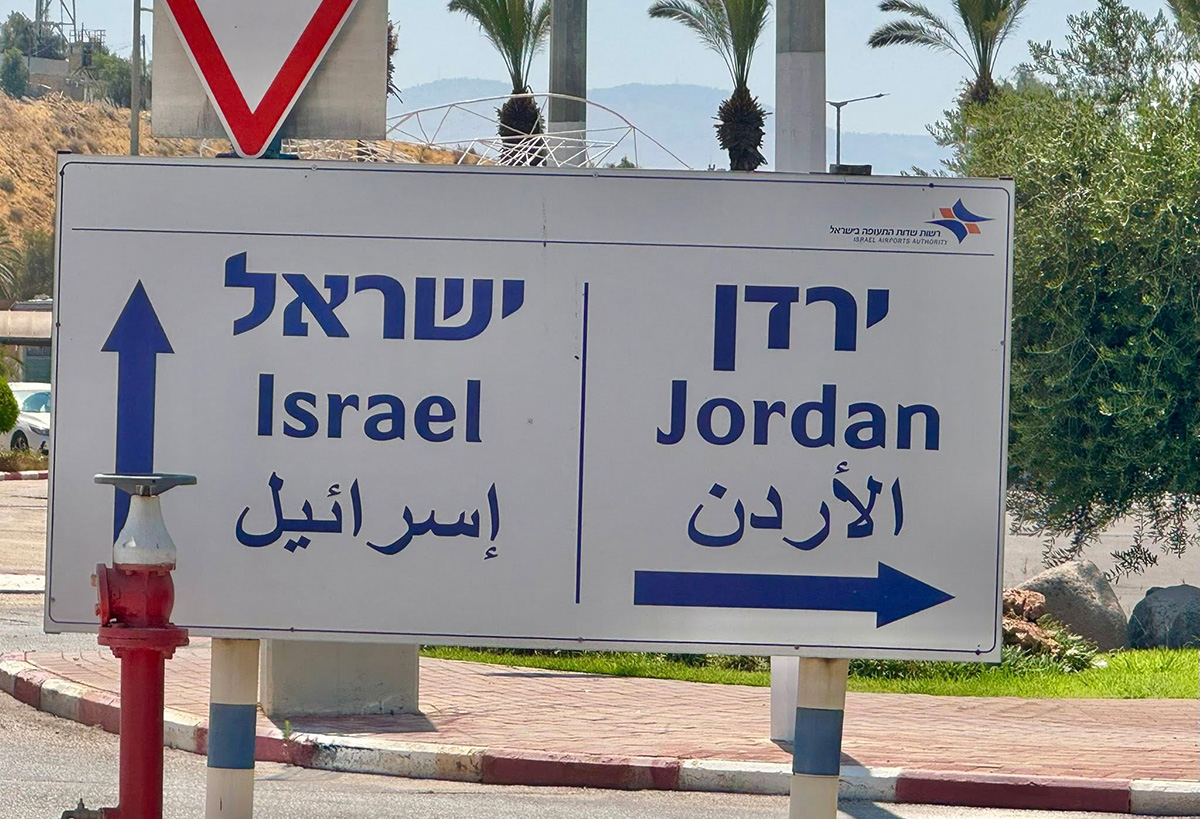
Mission participants arrived in Amman a short time later. They checked into their hotel and then had dinner at a restaurant.
“Now we feel like we’re safe and we’re in Amman,” recalled Rouse. “We’re sitting outside having a beautiful dinner.”
Iranian missiles passed over Amman shortly after Rouse and the other mission participants had begun to eat their dessert. They went inside the restaurant, and waited a few minutes before they boarded busses that brought them back to their hotel.
“No one was openly freaking out, which I was surprised by,” said Rouse.
The group was scheduled to fly from Amman to Cairo at 11 p.m. local time (4 p.m. ET) on June 16. They visited Jerash, an ancient city north of Amman, before their flight left Jordan.
“[The Jerash trip] actually took our minds off of everything,” said Rouse.
A Jewish Federations of North America contact met Rouse and the other mission participants at Cairo’s airport once their flight landed. Rouse arrived at JFK Airport in New York on June 17.
Trump-announced ceasefire ended 12-day war
President Donald Trump on June 23 announced a ceasefire that ended the 12-day war.
The U.S. three days earlier launched airstrikes that struck three Iranian nuclear sites. The ceasefire took effect hours after Iran launched missiles at a U.S. military base in Qatar.
Iran said the war killed more than 900 people in the country.
The Associated Press notes Iranian missiles killed 28 people in Israel. One of them destroyed Tel Aviv’s last gay bar on June 16.
The war took place less than two years after Oct. 7.
The Israeli government says Hamas militants on Oct. 7, 2023, killed roughly 1,200 people on that day when it launched its surprise attack on the country. The militants also kidnapped more than 200 people.
The Hamas-controlled Gaza Health Ministry says Israeli forces have killed nearly 55,000 people in the enclave since Oct. 7. Karim Khan, the International Criminal Court’s chief prosecutor, has said Israeli Prime Minister Benjamin Netanyahu and former Hamas leader Yahya Sinwar, who the IDF killed last October, are among those who have committed war crimes and crimes against humanity in Gaza and Israel.
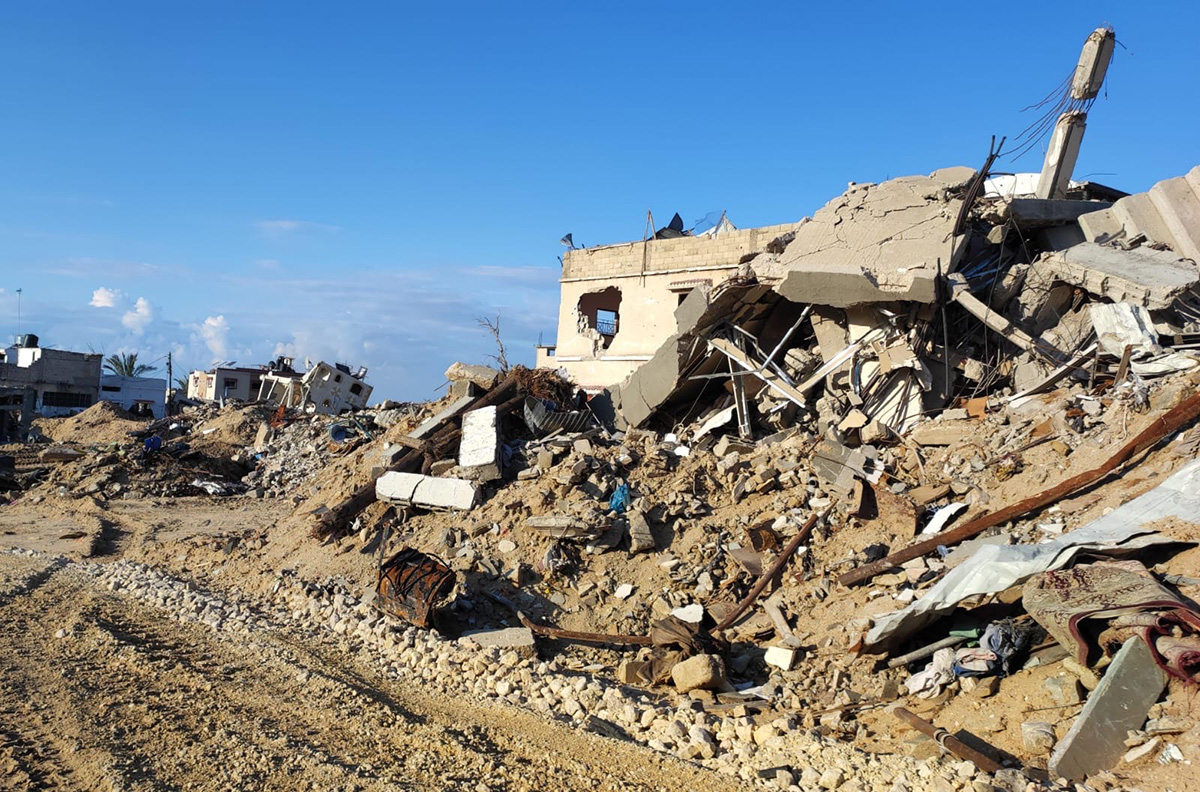
Rouse upon his return to the U.S. said he “was never as aware of the comfort of another human being than I was during that time.” Rouse affectionately called Nathan his “bomb shelter boyfriend” and even questioned the way he reacted to the missile alerts.
“He’s sitting on the edge of the bed and he goes, okay, I’m going to put on my socks and my shoes, and I say, really? You’re going to put on your socks,” Rouse told the Blade. “The fact that I was nervous, that putting on socks might have changed the direction of our lives, to me was like I can’t believe I said that to him.”
Rouse quickly added Nathan helped him remain calm.
“If I was by myself, those nights would have been long enough,” said Rouse. “It’s a totally different feeling to be with another human that you know than to be by yourself.”
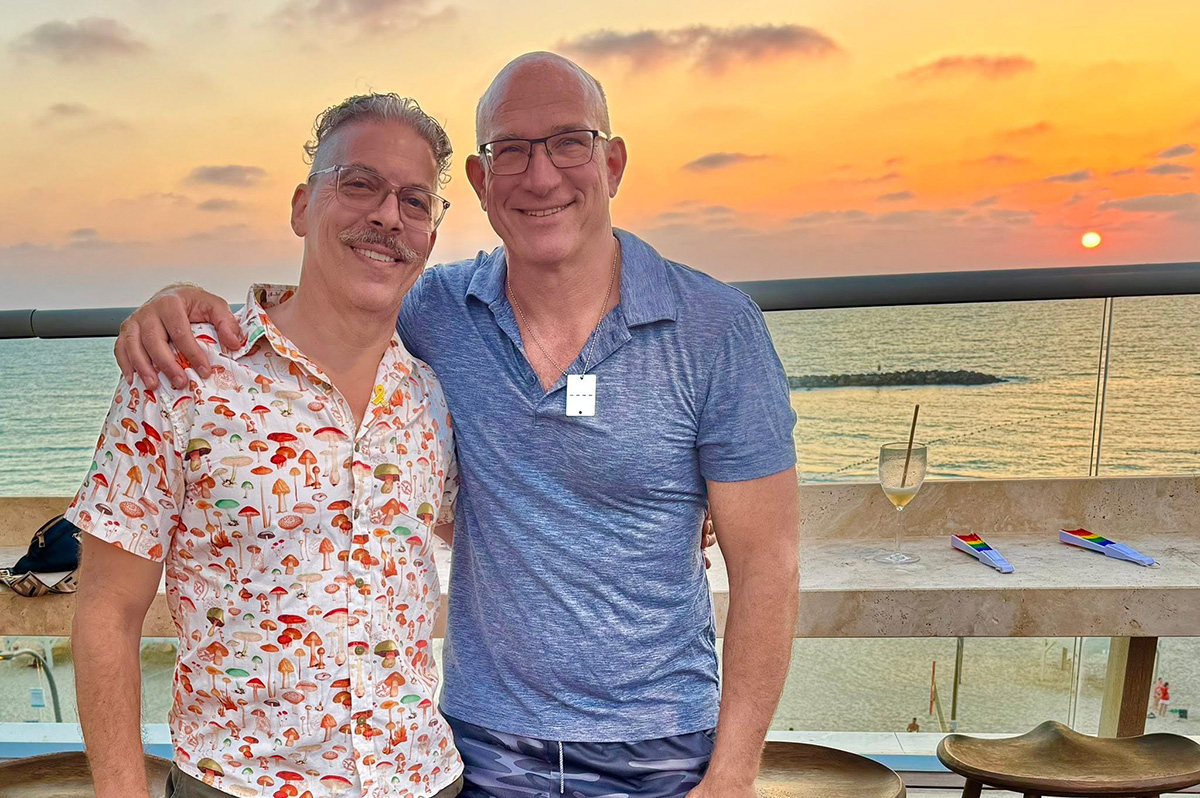
Rouse also praised the Jewish Federations of North America.
“JFNA really sprung into action and started to figure out all options to get us all safely home,” said Rouse. “It was all about logistics. Staff worked around the clock identifying and then mobilizing to get us back to the states. It was a great team effort and I know I speak for everyone in expressing our deep appreciation for their dedication to getting us safely home.”

